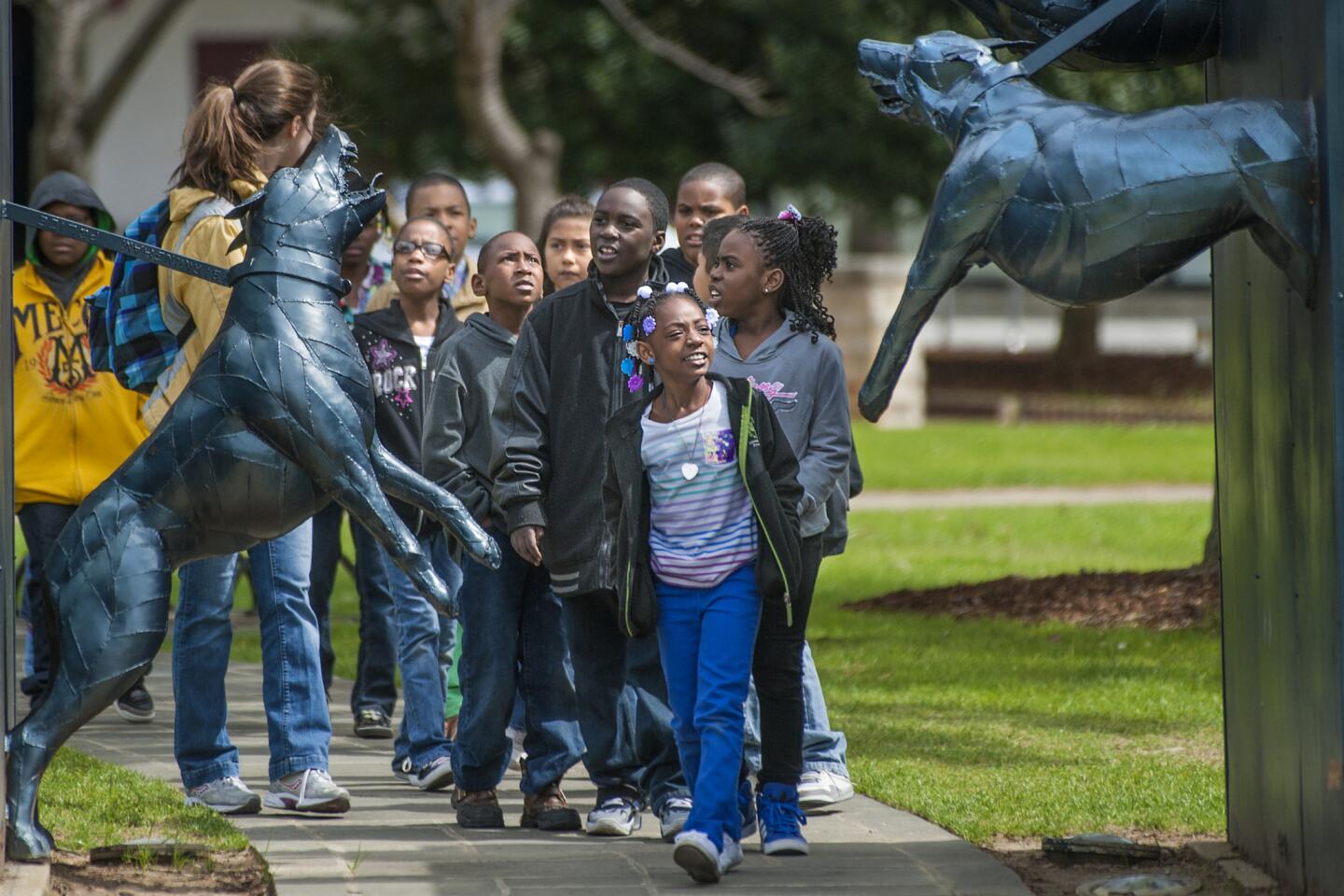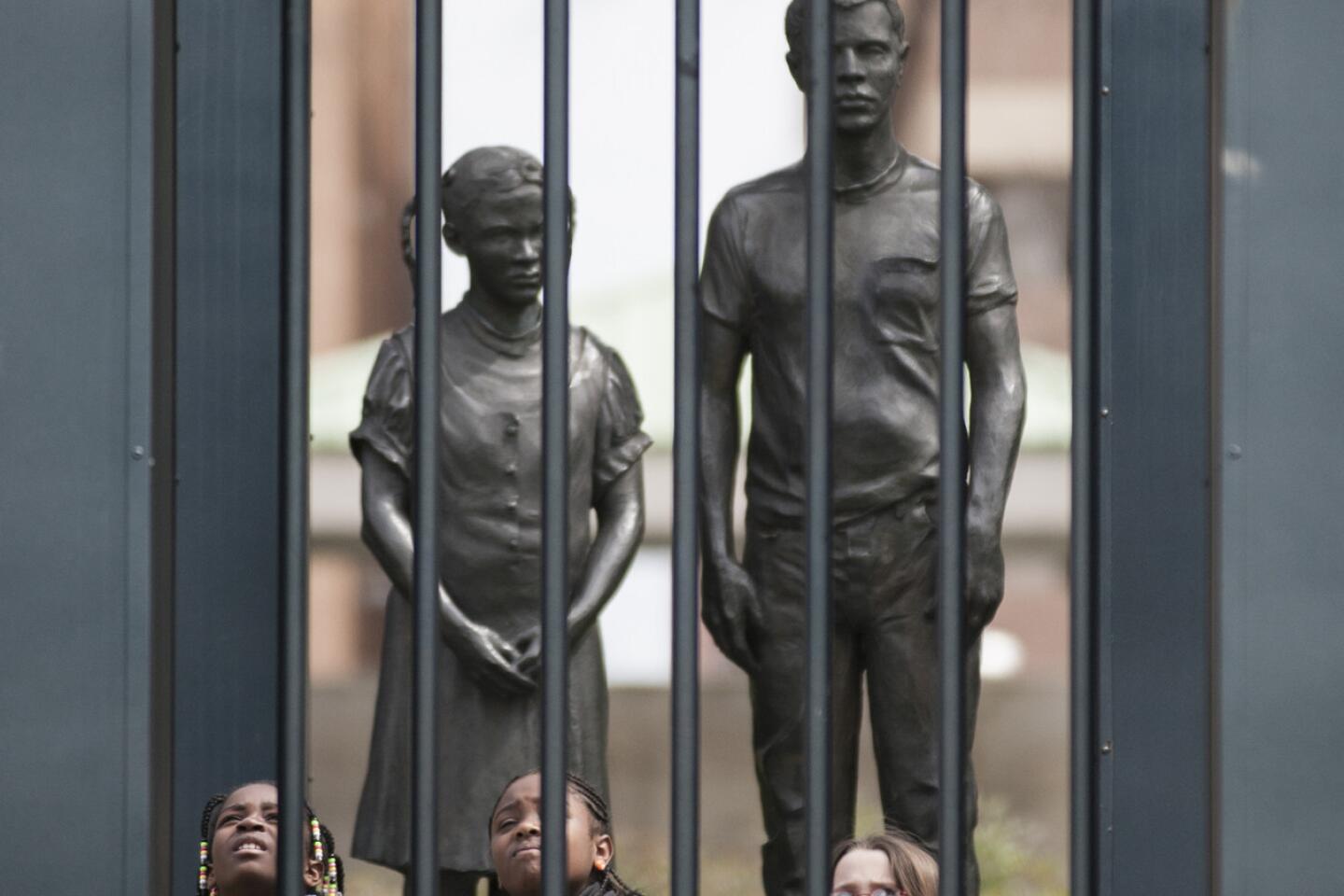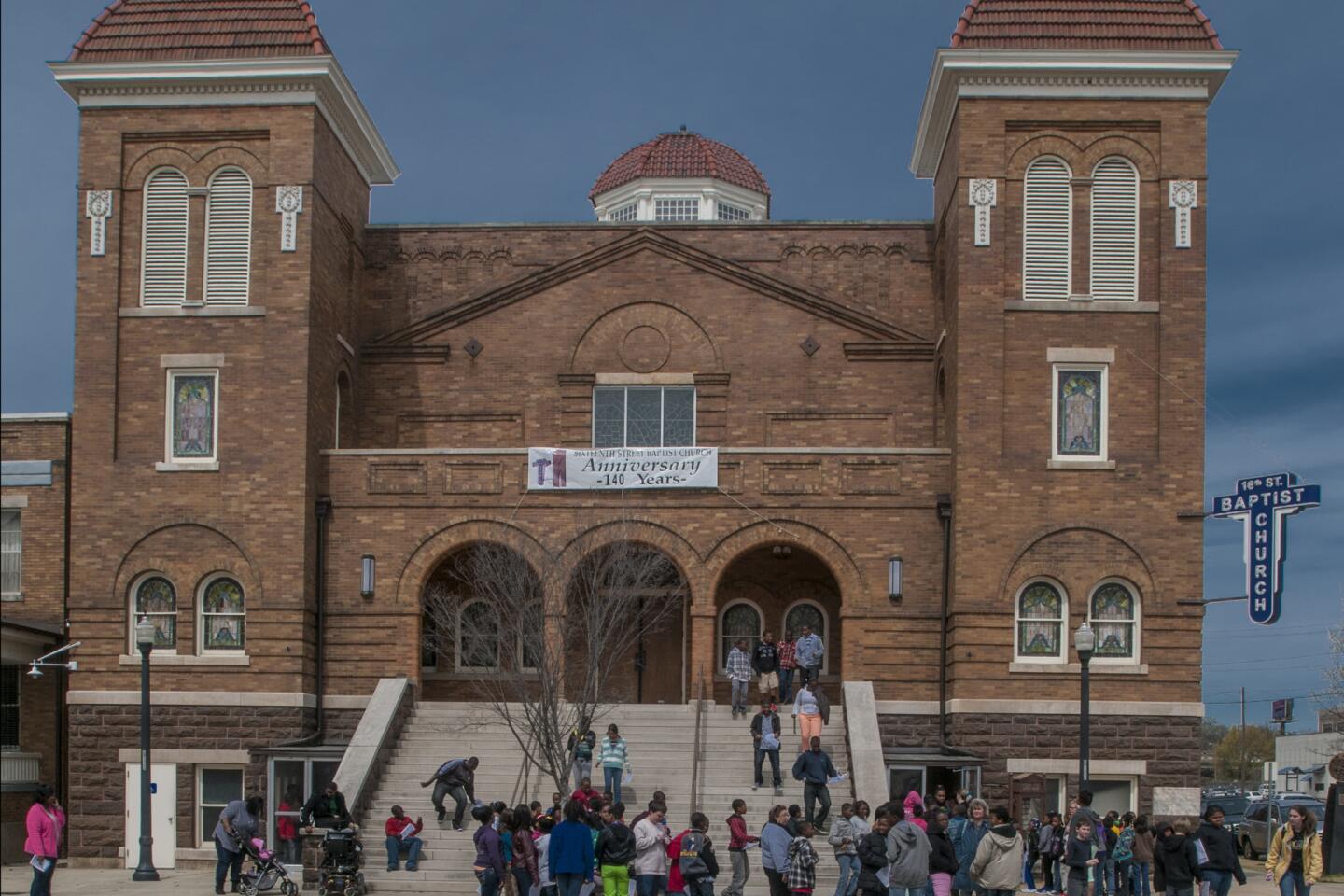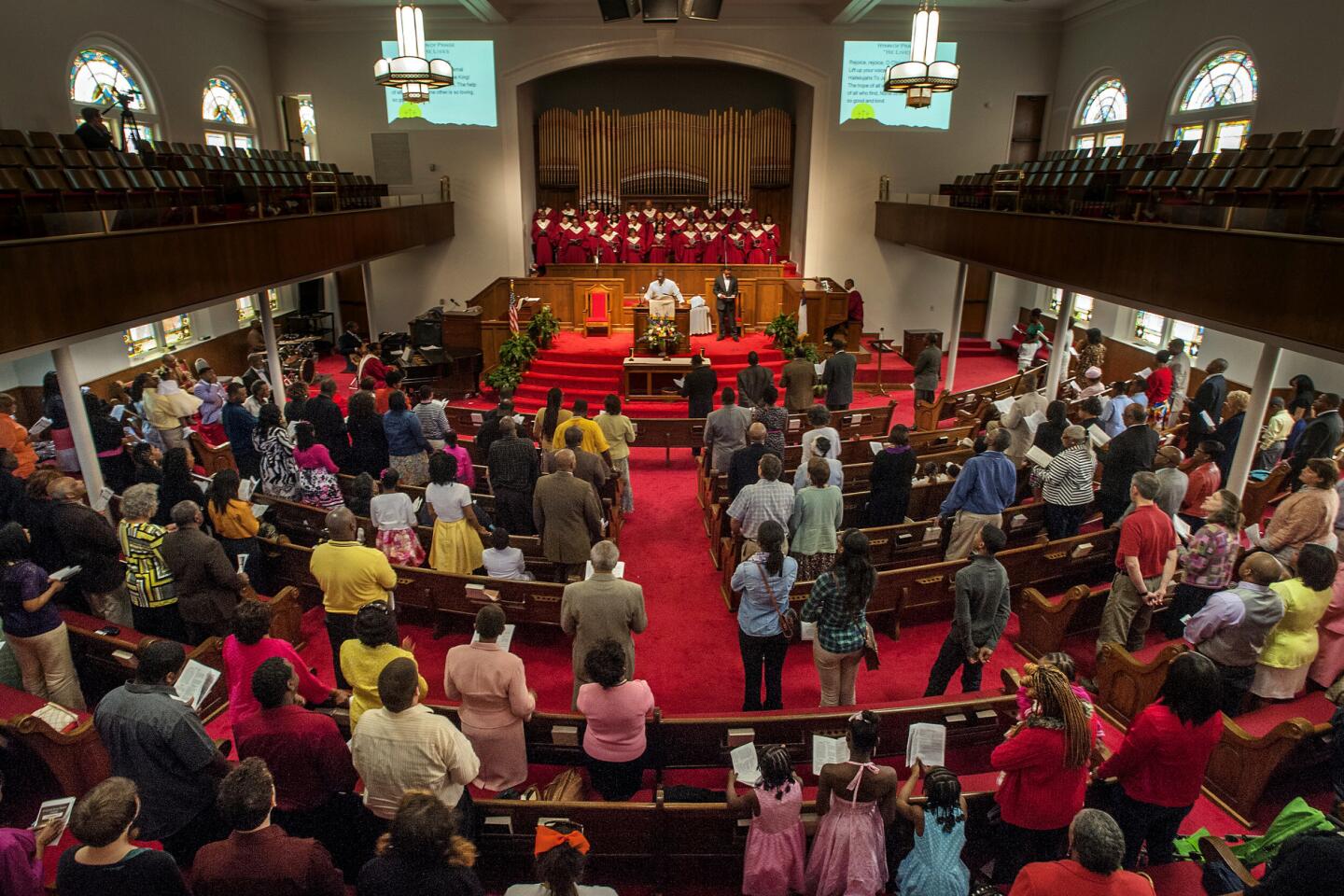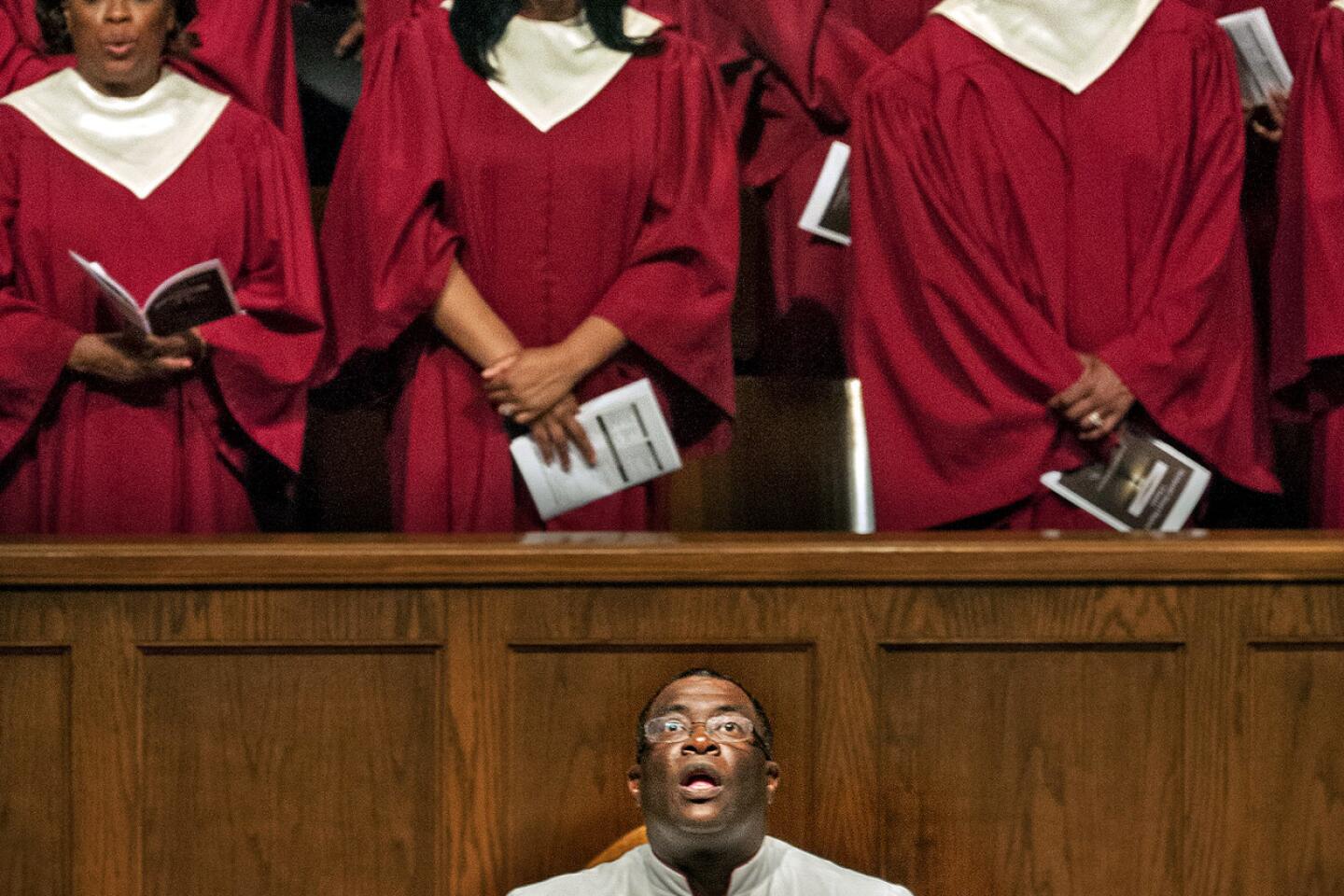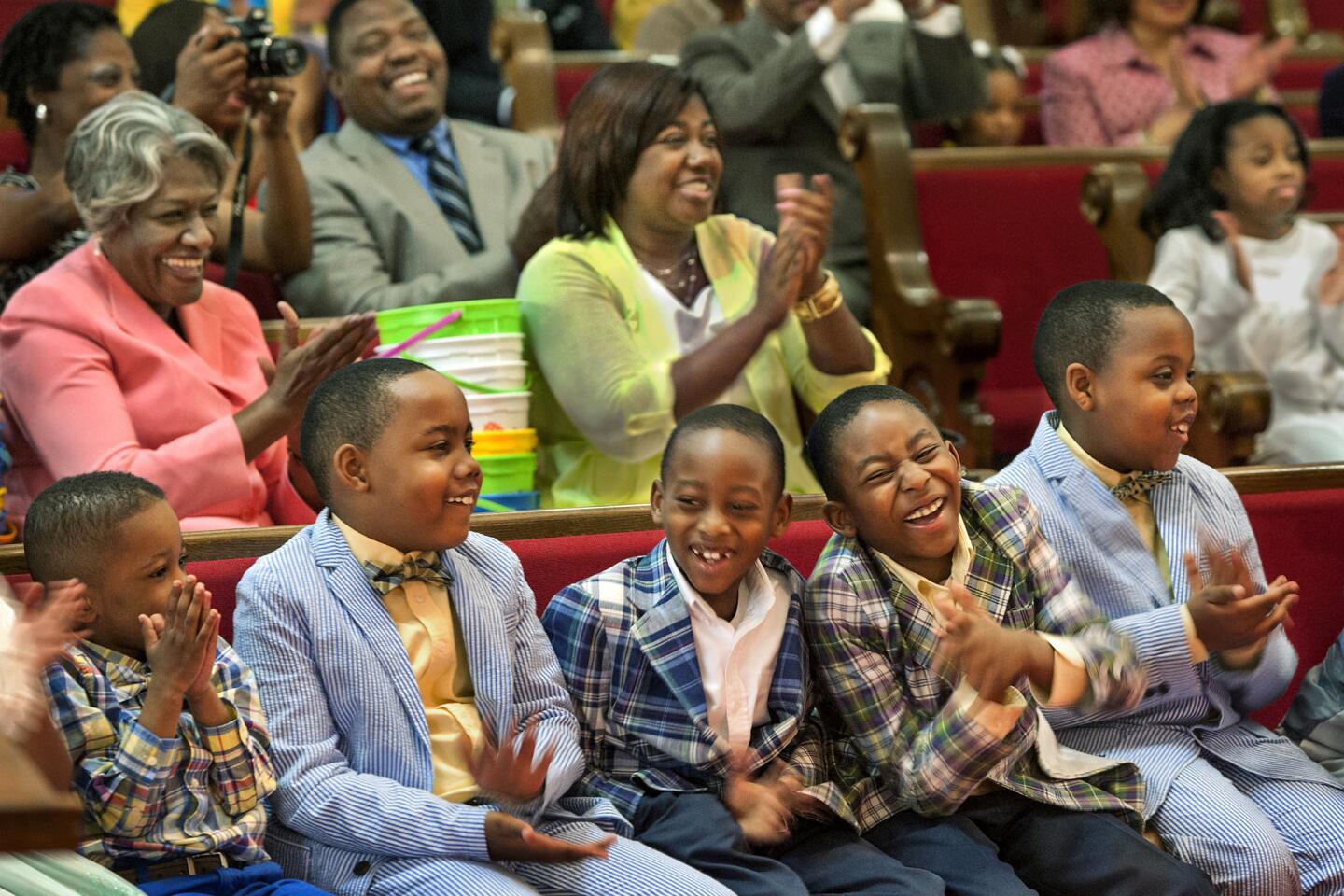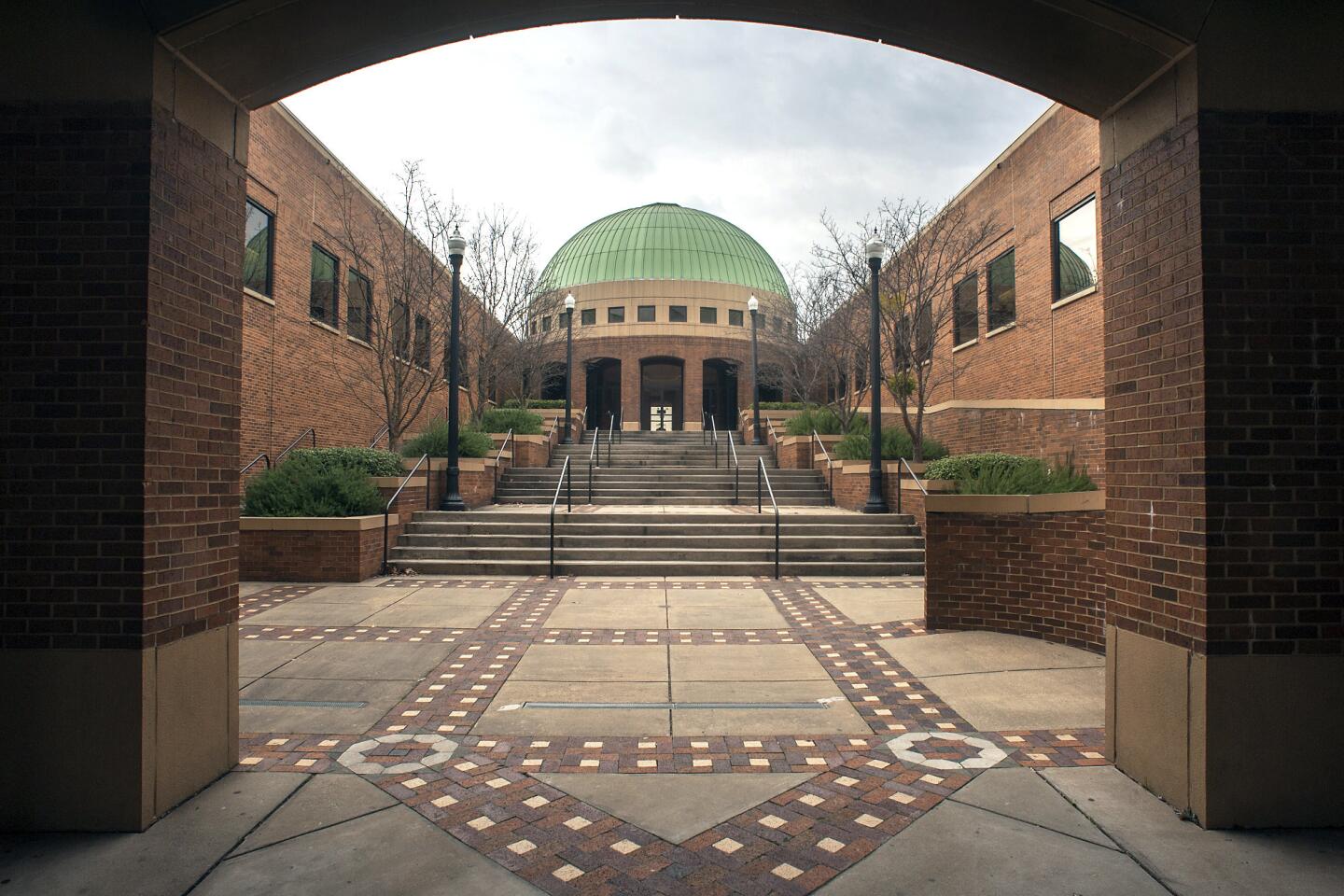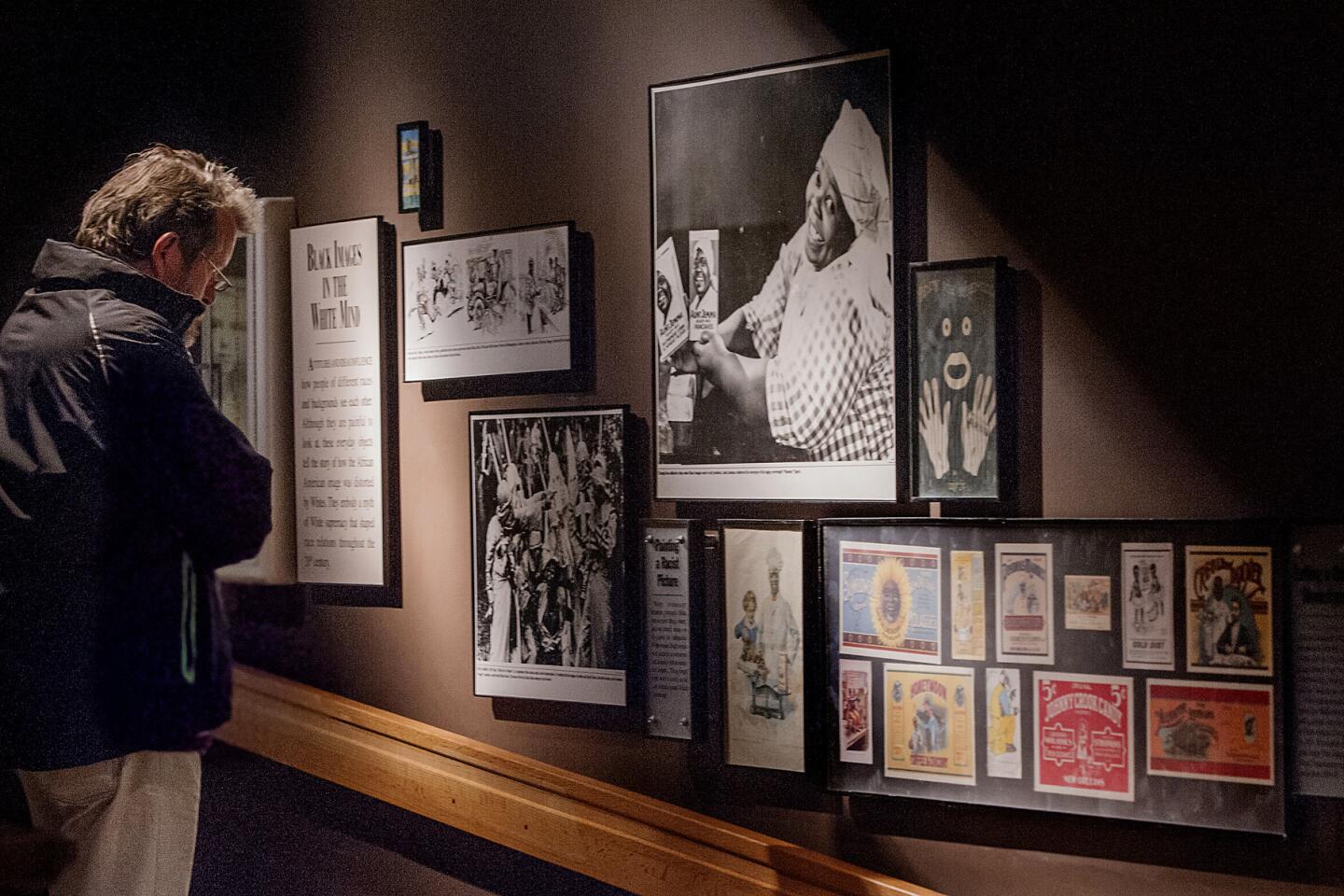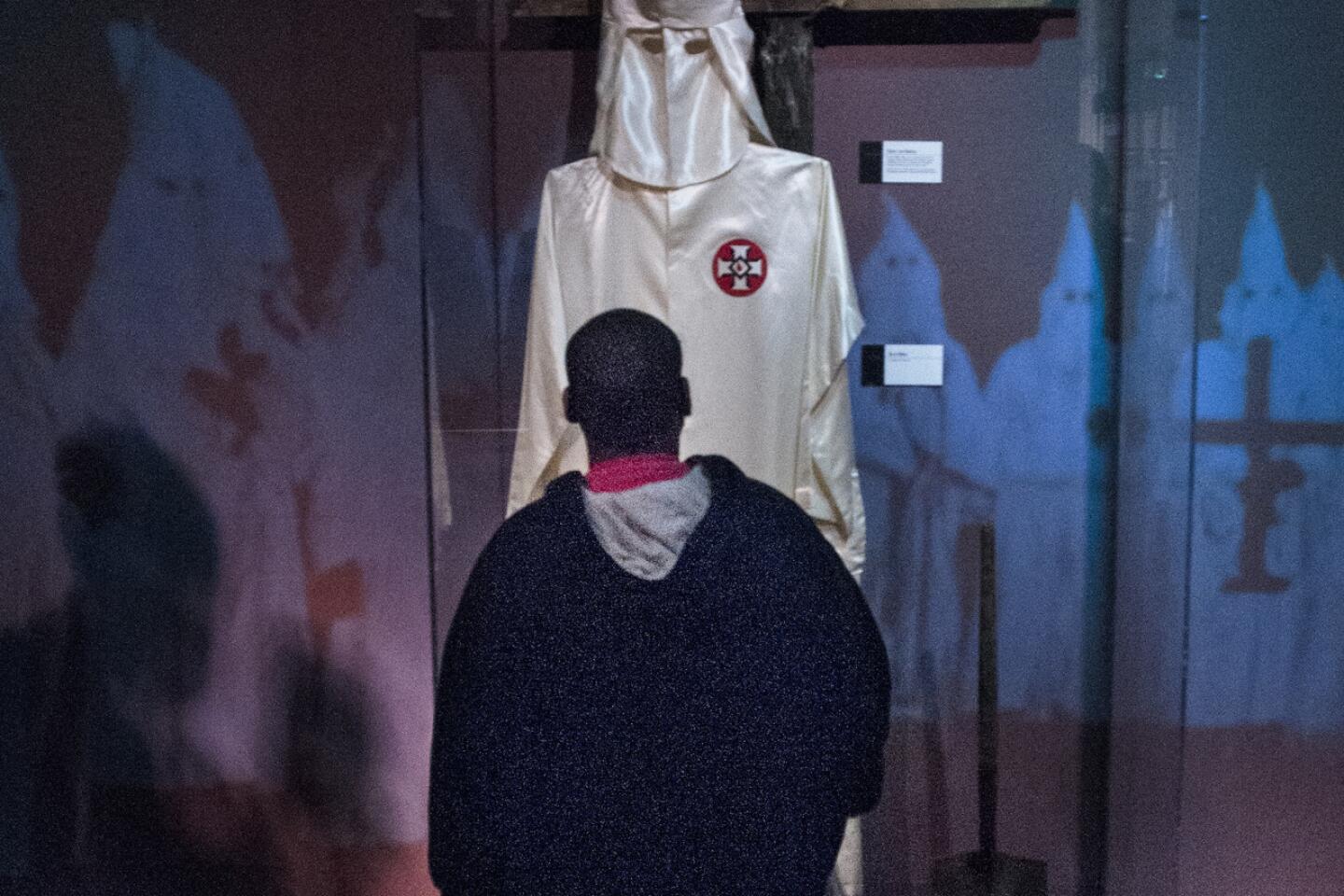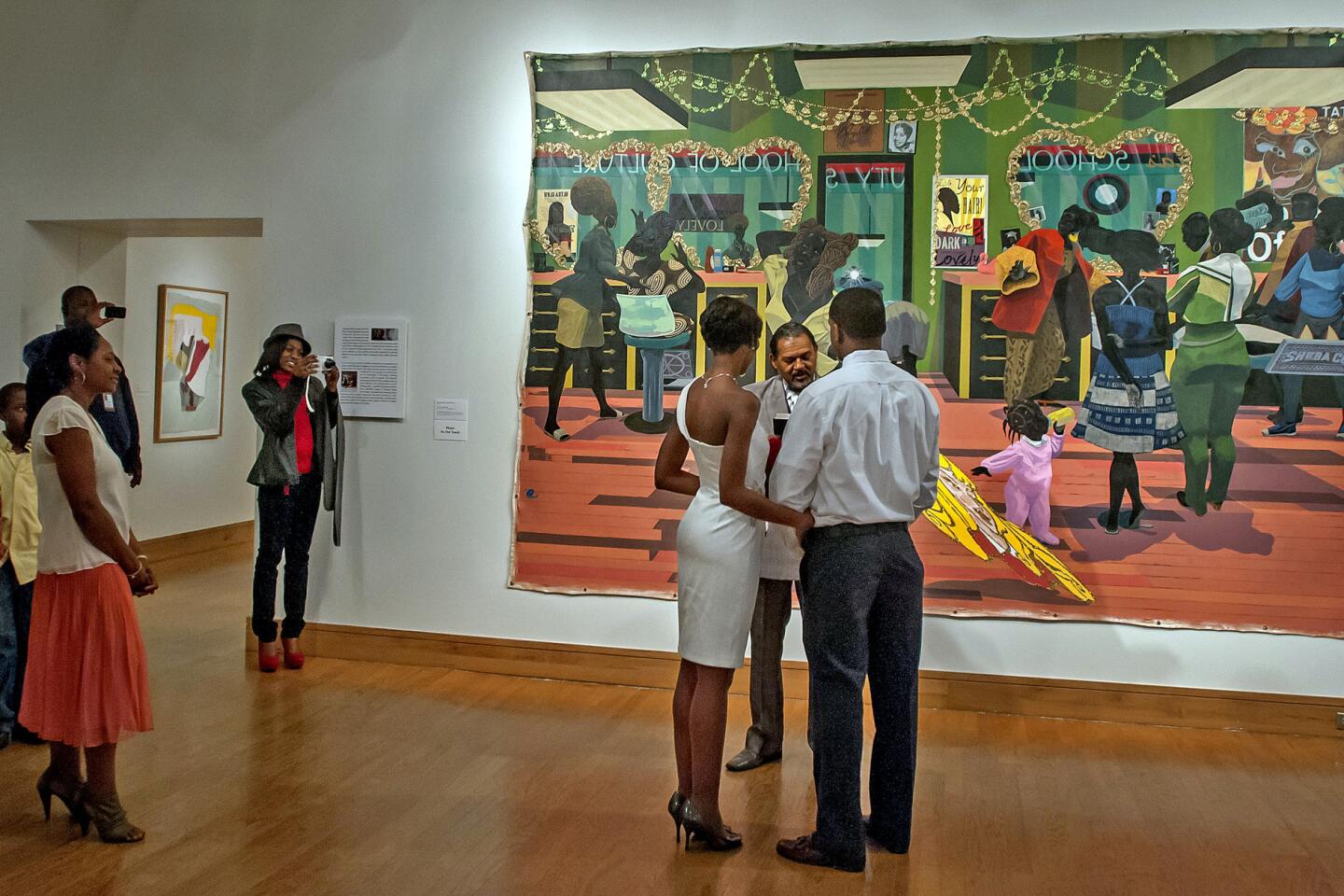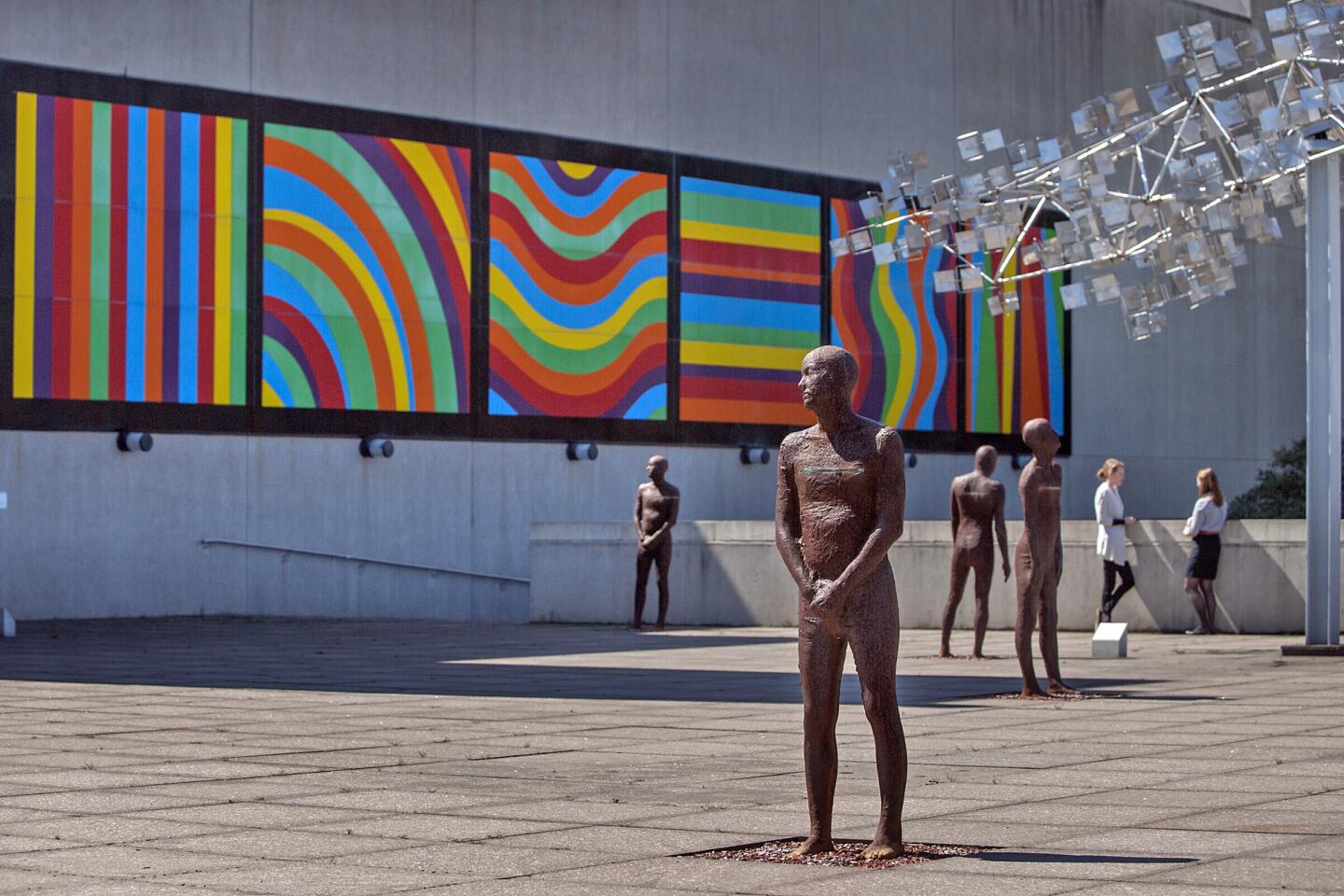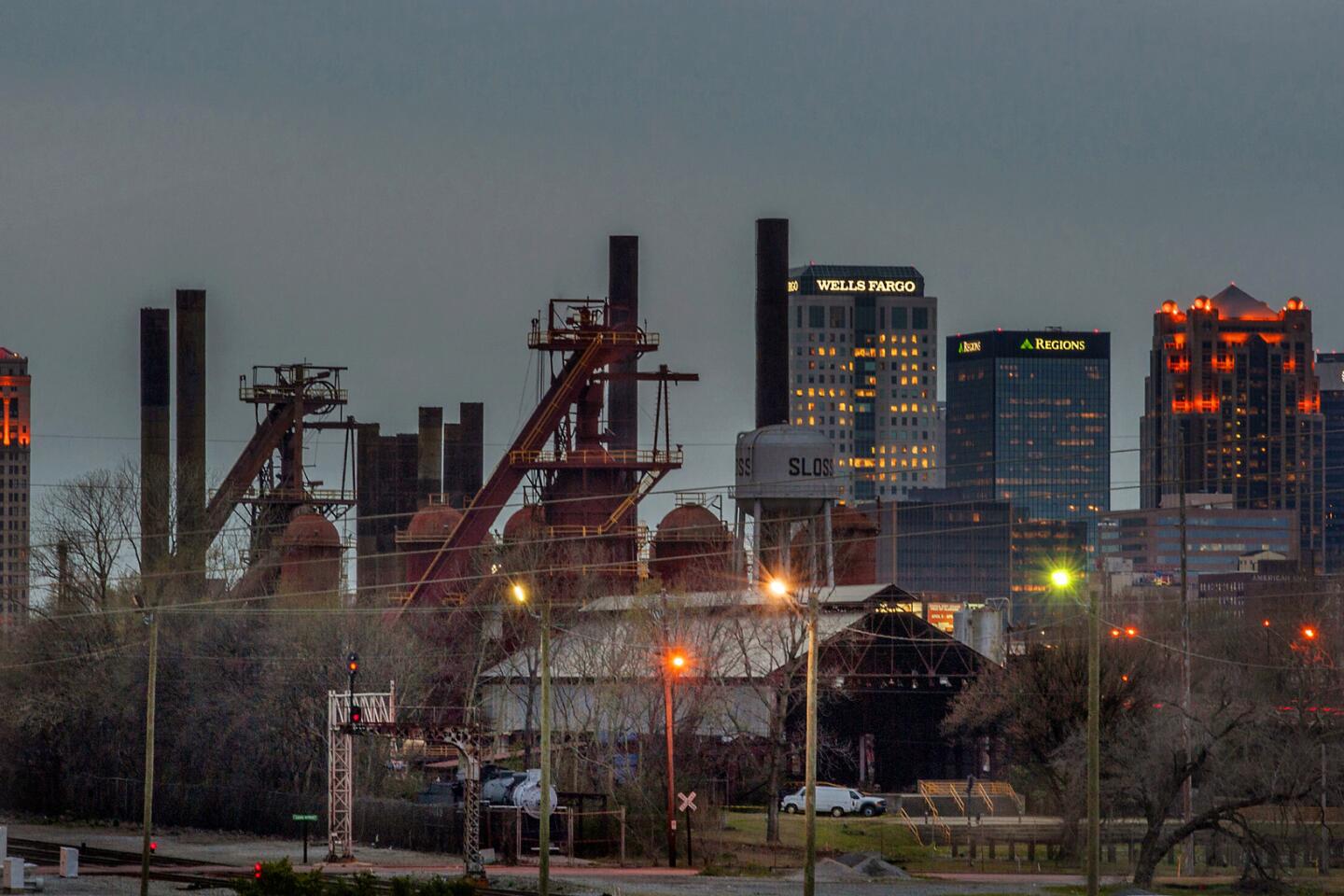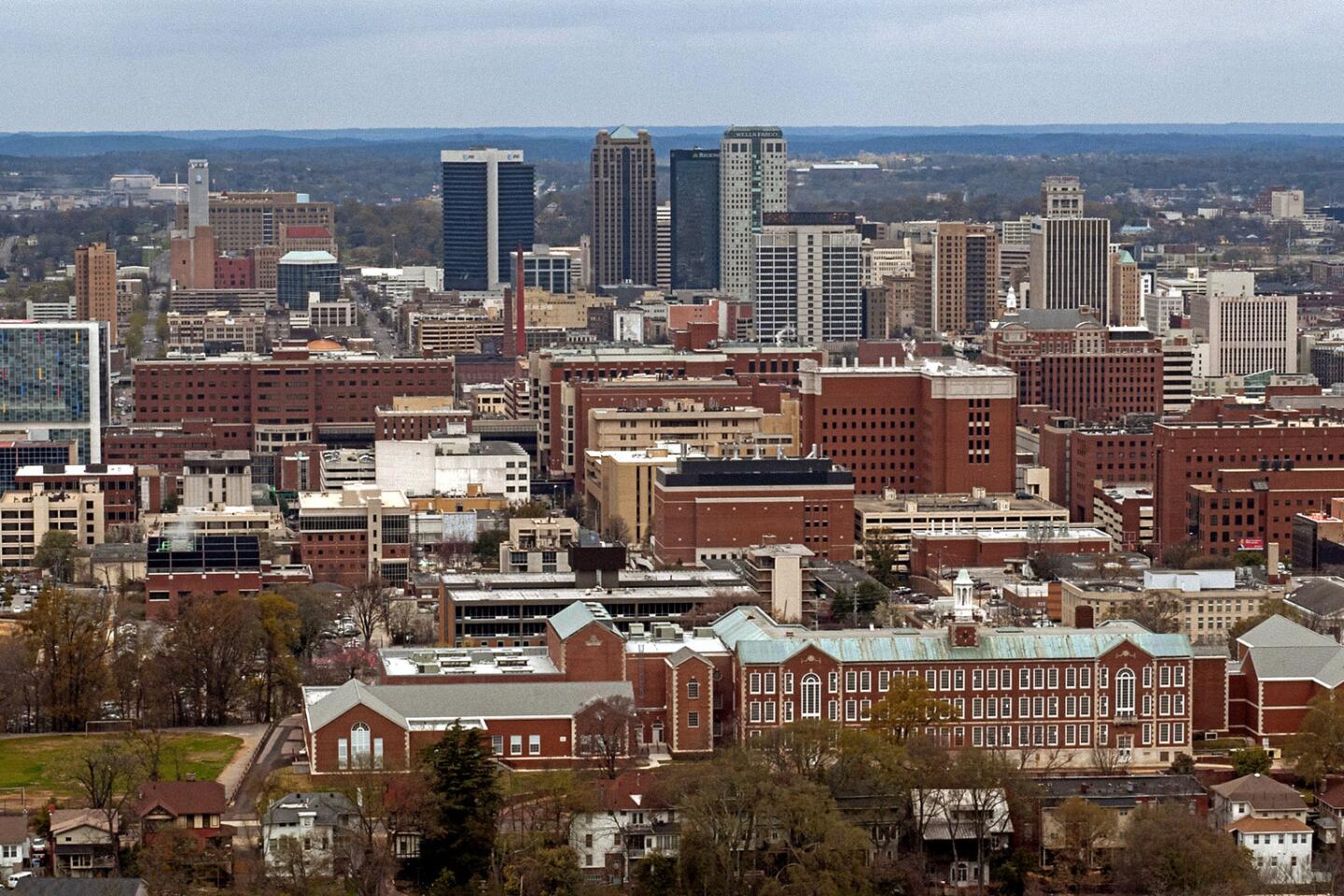Birmingham, Ala., embraces its complex history
- Share via
BIRMINGHAM, Ala. — When I told friends I was planning a trip to Birmingham, the reaction was universal.
“Alabama?” one asked. “On purpose?”
I shared their skepticism, viewing the travel literature with the jaundiced eye of a longtime Angeleno who puzzled over the concept of vacationing in the South. But I was flying here for a business meeting that had been scheduled for Presidents Day weekend, so why not take some extra time and look around?
It’s not the oldest or most storied city in the South. But Birmingham — about a 21/2-hour drive west of Atlanta — has a complex history that includes post-Civil War industrialization, the corruption of an establishment that planned to carry out that industrialization with nonunionized and African American labor and, decades later, its role as a staging ground in the fight for basic human rights.
This year marks the 50th anniversary of some of the most important events in the civil rights movement, and many of them took place in Birmingham: the Rev. Martin Luther King Jr.’s “Letter From Birmingham Jail”; Public Safety Commissioner Bull Connor’s use of attack dogs and fire hoses against peaceful demonstrators, many of them children; and the bombing of the Sixteenth Street Baptist Church that killed four young girls.
Official Birmingham is embracing this anniversary with a year of photo and museum exhibitions, concerts, plays, symposiums, festivals, workshops and the National Conference on Civil Rights. I scheduled an extra day at the beginning and the end of my meetings to see the city’s historic core, visiting the Birmingham Civil Rights Institute, the Sixteenth Street Baptist Church and other places that helped me understand the city’s legacy.
After a few short days, I found myself becoming a banner carrier for Birmingham: Anyone who cares about U.S. history should plan a trip here.
Downtown’s Tutwiler hotel makes a good starting point. The original building was torn down in the 1970s, but with a boost from private and government grants, the Tutwiler family transformed the 1914 Ridgely Apartments into a new Tutwiler hotel — with attractive rooms, a restaurant that pays attention to food and a bar that serves a nice selection of cocktails.
On my first morning here, I left the Tutwiler and headed down 6th Avenue North on my way to the Birmingham Civil Rights Institute, a 58,000-square-foot facility with exhibition space, meeting rooms, multimedia presentations and an extensive oral history collection with more than 500 interviews. Every few hundred yards on 6th Avenue, I stopped to read the markers along the Civil Rights Heritage Trail, signs with photos and quotes that commemorate significant locations on march routes.
The markers lead to Kelly Ingram Park, across the street from the institute and cater-corner from the Sixteenth Street Baptist Church. The 4-acre green space is the site of statues and sculptures — some in welded steel, others in limestone or bronze — that commemorate and, in some cases, depict the civil rights movement and the city’s notorious response: police dogs, fire hoses, jail time. The park was once the heartbeat of civil rights activity in Birmingham, but at 10 a.m. on this day, it was empty.
Where were the children on field trips? But then I spotted them, making their way into the Civil Rights Institute. I followed them — fourth-graders, I later learned — into a handsome domed lobby. “Hope this doesn’t wreck it for you,” a teacher said, smiling ruefully. In truth, their reactions to mid-20th century events enhanced the experience. I trailed the students, waiting to see what engaged them.
Many of the exhibits were designed to re-create life in Birmingham when Jim Crow laws determined how people would function in the segregated city. Displays include a replica of a burned-out bus that had carried Freedom Riders and timelines that track the progress of the civil rights movement. Some of the fourth-graders lingered to read enlargements of newspaper clippings and quotes from leaders of that movement. They halted, a few of them bewildered, in front of a replica of segregated classrooms.
Toward the end of the visit, the kids were asked to sit on the floor and watch a short video on a huge screen. “No talking,” a teacher said. “Listen.” Scenes from the August 1963 March on Washington flickered on the screen, including clips from King’s “I Have a Dream” speech. The fourth-graders applauded. It felt like a benediction.
The Sixteen Street Baptist Church sits across the street from the institute. Once inside, our guide gently reminded the small clutch of visitors that the church is more than a symbol of the civil rights movement; it’s a 21st century parish with services, meetings and Sunday school classes. But as we waited, I found it impossible to think about anything but the events of 50 years ago.
On Sept. 15, 1963, soon after the March on Washington, a dynamite blast ripped open the basement of the church, which had become the site of civil rights movement meetings. Four girls died; at least 20 people were injured. It took more than a decade for any of the suspects to be convicted of the real crime, and the reverberations of the blast — national anguish and anger, a slow serving of justice — continue to this day.
After our small group watched a video that focuses on the history of the church and the headlines of 50 years ago, the tour guide, a parishioner, patiently recalled and repeated details of the bombing and its aftermath. It’s almost impossible to learn too much about this historical site.
In the afternoon, I ran into a colleague and persuaded her to join me as I explored some older monuments to Birmingham’s past. First stop: Sloss Furnaces, which opened just a few years after the town was founded in 1871.
The men who planned Birmingham (and named it after the industrial powerhouse of Birmingham, England) chose a place close to deposits of limestone, coal and iron ore, paving the way for the growth of local iron and steel manufacturing. Sloss Furnaces, now a national historic landmark, helped propel the city into industrial prominence that continued through the 1960s.
The abandoned blast furnaces, in a park-like setting, have a natural, desolate beauty. The size of those furnaces and the cars used to transport molten pig iron made us feel Lilliputian, excellent preparation for our next stop: the Vulcan Park and Museum, atop the city’s Red Mountain.
The highlight of any trip up the hill is a gigantic statue of the Roman god of the forge, cast in 1904 and long touted as the world’s largest cast-iron figure. He’s 56 feet tall and sits atop a 124-foot-high pedestal. A short elevator ride in a tower attached to the pedestal offered great views of the city (the Birmingham-Hoover metropolitan area has more than 1 million people) and on this day, Feb. 14, decent views of several weddings taking place. “It’s a big day for weddings,” the woman in the ticket booth explained.
Was this romanticism inspired by the view? The date on the calendar? Perhaps it was Vulcan himself: He wears an apron, but his pants are nowhere to be found.
The next morning, I spent a couple of hours in the Birmingham Museum of Art, where many of the galleries are devoted to European paintings and decorative arts from the 13th through the 19th centuries. The museum’s collection of American art includes works by Gilbert Stuart, John Singer Sargent, Frederick Remington and Georgia O’Keeffe. The top floor includes galleries devoted to African and Asian art, Native American and pre-Columbian works and, oddly, a large collection of Wedgwood ceramics. But some of the most striking pieces are displayed in a gallery devoted to recent acquisitions, including a “wearable sculpture” — fabric with applique crochet and buttons and yarn — by performance artist and sculptor Nick Cave.
At lunchtime, I picked up three of my colleagues who were eager to dine at Chez Fonfon in the Five Points area of Birmingham. The French bistro was opened in 2000 by Frank Stitt, who, many believe, has almost single-handedly put Birmingham on the foodie map with Fonfon, the next-door Highlands Bar & Grill, and Bottega Restaurant & Cafe.
Chez Fonfon did not disappoint. Our group sampled a fennel and blue cheese tartine; gravlax with potato cakes and horseradish cream; a shrimp and avocado salad; trout with brown butter, capers and Brabant potatoes; and Gulf fish with olives, roasted potatoes and aioli. The relatively small space (it seats about 60) with its high ceilings and stone tile floors made for a civilized midday meal.
A typical Birmingham experience? Perhaps not. The next night we dined at Saw’s Juke Joint in the suburb of Mountain Brook, southeast of downtown. It was crowded with locals who wore their loyalties — Auburn and Alabama, primarily — on their sweat shirts and kept their eyes glued to the flat-screen TVs tuned to the sports matchups of the day.
Our waitress handled our party with ease, and soon we were feasting on fried okra, onions and pickles, pork with grits and turnip greens, and deviled eggs, all served amid buckets of peppers, barbecue sauce, hot sauce and mustard, rolls of paper towels, and beers and margaritas.
If Fonfon calls to mind an outing on a sunny afternoon in the south of France, Saw’s Juke Joint is more Oktoberfest in Munich. Almost every member of our crowd departed with a glaze of satisfaction on his or her face.
As we crisscrossed the city to various dining spots and meeting locations, we stopped at several other landmarks — Cathedral Church of the Advent, the Alabama Theatre and the Alabama Power Building. But a handful of us wanted to return to the Sixteenth Street Baptist Church for Sunday services.
We needed more time to look around and take in the beauty of the sanctuary. We listened to hymns of praise, readings from Luke and Matthew, and a pastor who preached for close to an hour — seemingly without notes.
Inside, the congregation listened to the choir sing “Victory in Jesus.” Outside, runners in the Mercedes-Benz Marathon passed by, struggling to complete their Herculean task. Just a few minutes away, patrons at the newly opened Todd English P.U.B. at the Westin Birmingham sipped beers and indulged in another type of worship: the adulation of professional sports figures.
Faith takes many forms in Birmingham, and on this Sunday morning they all seemed to be on display.
More to Read
Sign up for The Wild
We’ll help you find the best places to hike, bike and run, as well as the perfect silent spots for meditation and yoga.
You may occasionally receive promotional content from the Los Angeles Times.
